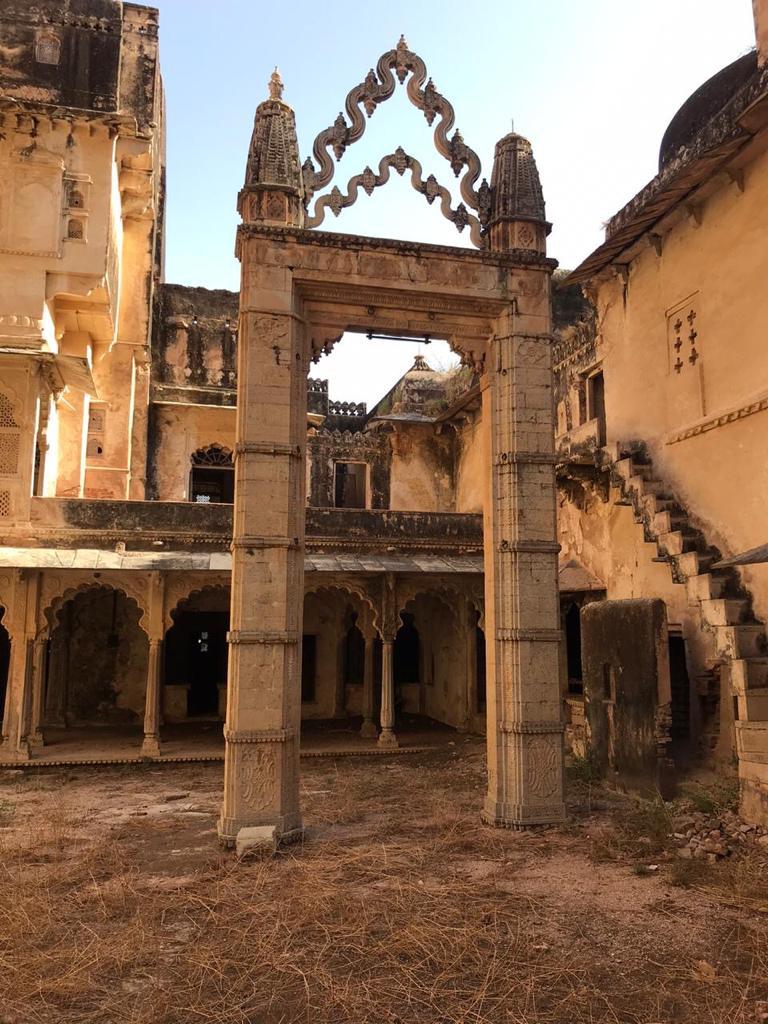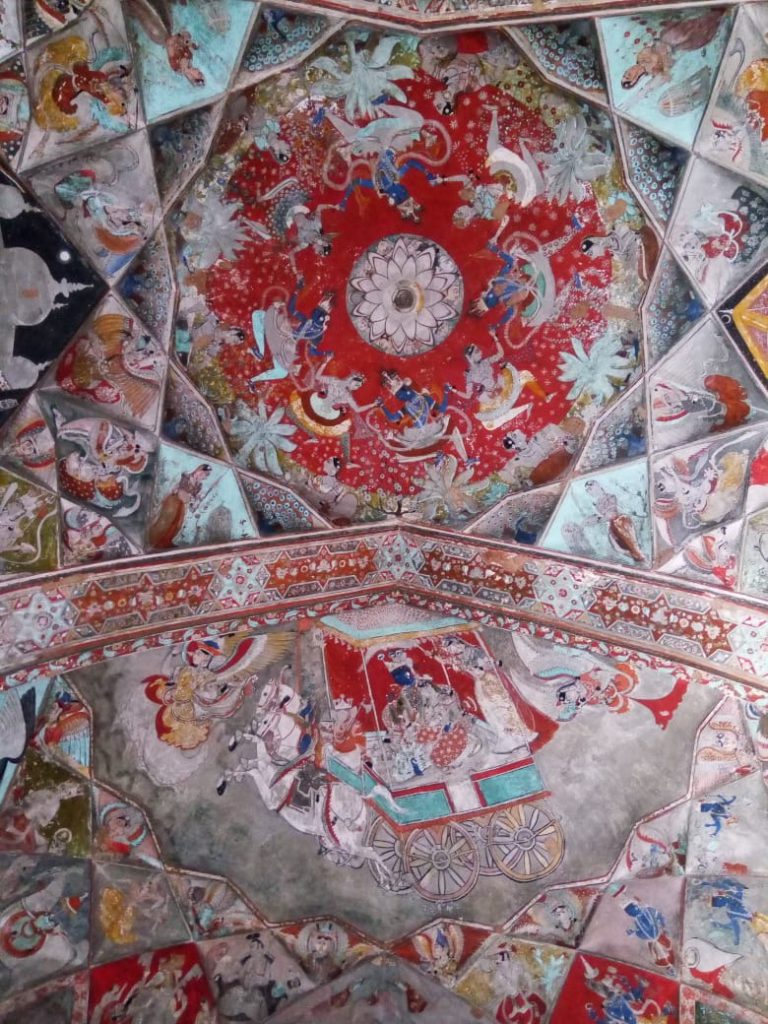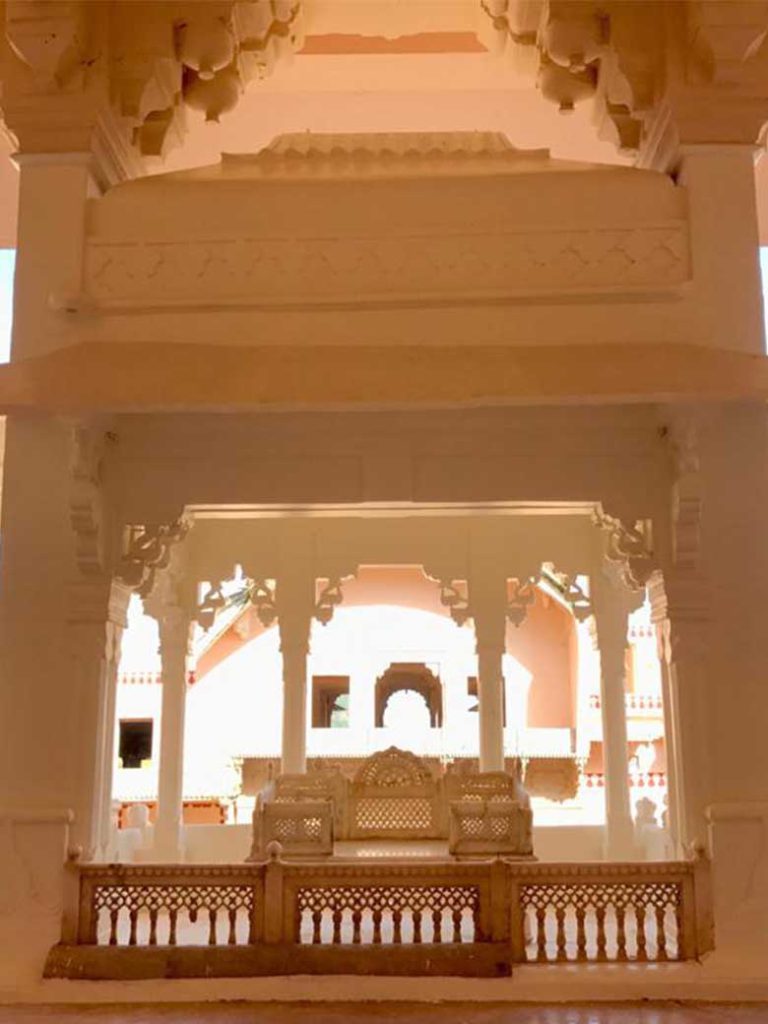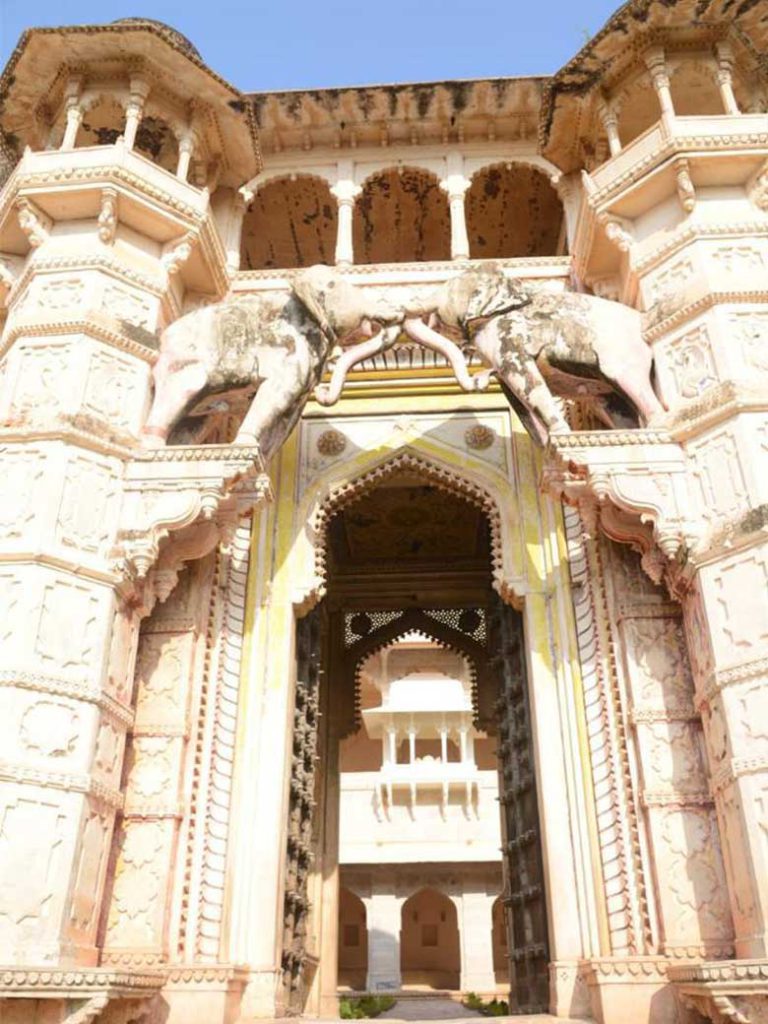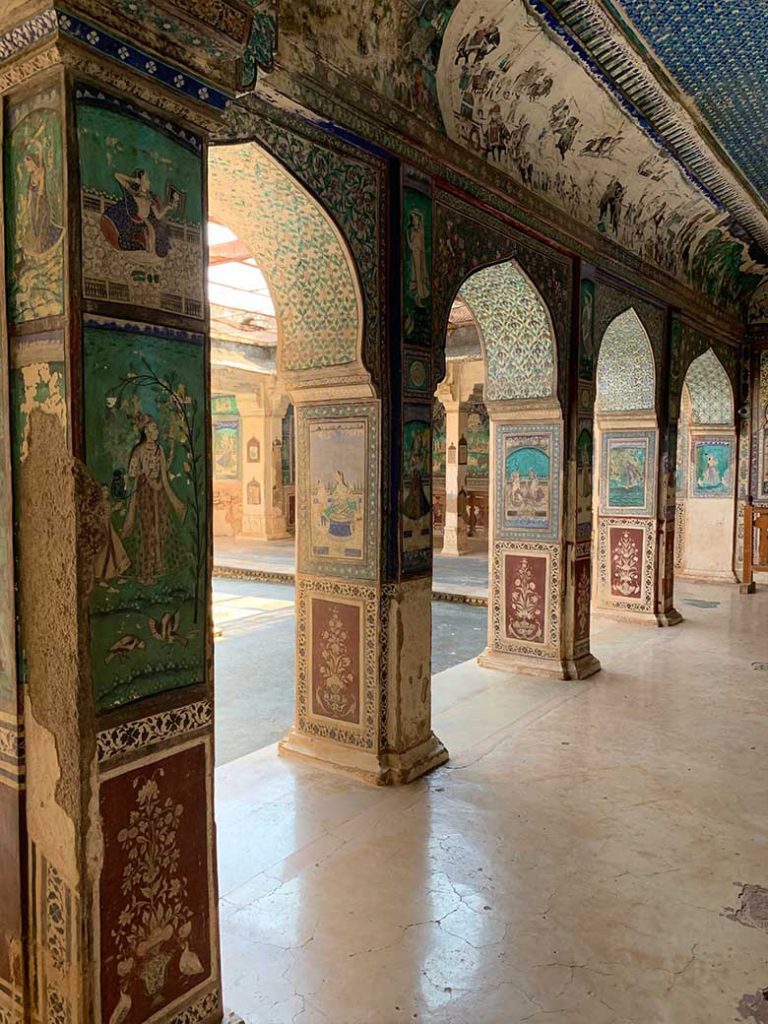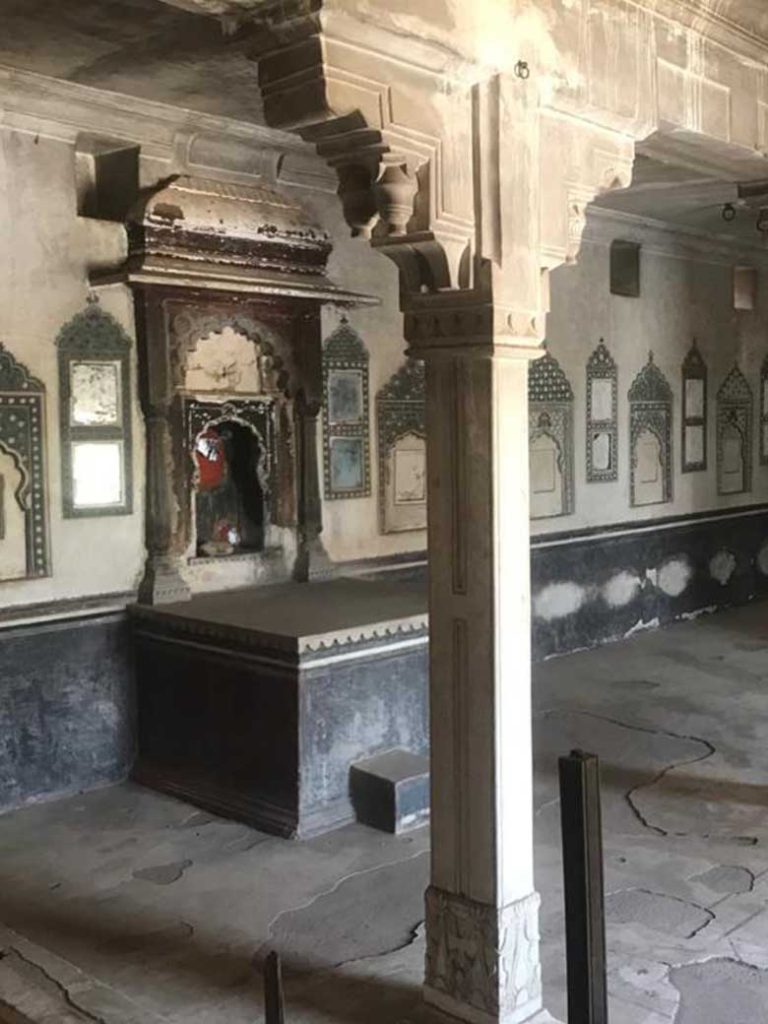Architecture
The Garh Palace and Taragarh Fort is the private property of “Kuldevi Aashapura Mata Ji Trust” and Bhanwar Jitendra Singh Jee of Alwar
Architecture of Bundi Palace
The Fort of Bundi can be seen as a microcosm that appropriates and implements the principles of an urban macrocosm.
The first extension of the zenana was the palace of Rao Bhoj occupying the southeast corner of the present zenana building and was extended to double the size through the construction of a further structure- a central courtyard with tibari (arcade), and surrounding closed and vaulted spaces, all opening onto an external loggia facing the city.
A staircase made around the northwest corner of the building connects the building of the zenana with the second building. This structure also consists of an aggregation of serial quadrangular cells round a long rectangular courtyard.
The walls on the southeast of the building are obliterated by the Badal Mahal, the porch of which occupies the south side of the great court of the zenana.
Subsequent expansion of the creation of building that can be identified today with the mardana, spaces dedicated to the men. Arranged along the south side of the complex and bounded on the north by the monumental staircase leading to zenana.
At the ground level is hypostyle square hall, the so-called Hatiyansal (with structural posts and beams forming 3×3 metre cells) flanked symmetrically by two pairs of ancillary rooms.
Contemporary with the zenana courtyard is the stairway that ascends to it, starting from the entrance chowk behind the Hathipol. This staircase, perpendicular to one side of the courtyard of the zenana, aligns with the axis of the courtyard, with the entrance at one end and a large stone swing about 7 mts. High on the other end.
Hathipol, the monumental entrance to the Garh Palace is clamped between two sturdy octagonal towers, which terminates in chhatris or octagonal cupolas, from which protrude the trunks of elephants carved in stone.
The roof garden in the form of Chaharbagh is built on a high artificial terrace that serves as a parterre to the Chitrashala is built at a level over 4 mt. higher than that of the private court or Diwan-i-Khass and 10.5 Mts. above the Hathipol.
The north side of the palace building is among the areas most recently realized. This includes the Chitrashala, the painting gallery. Paintings here show the water was drawn up through an articulated system of hydraulic engineering, though they also depict porters loaded with goat skin bags carrying up water drawn from wells in the plains.
The first half of the 17th century has therefore to be understood as a fundamental period of transition (from Badal Mahal built by Rao Bhoj Singh to Ratan Daulat and Hathipol built by Rao Ratan Singh to Chhatar Mahal built by Rao Chhatarsal) in which to detect the evolution of the techniques of design and construction of the palace. Later in the century, Chirtashala, Rang Vilas and Anniruddha Mahal built by Rao Aniruddha Singh.
In conclusion, from the Garh palaces in Bundi, it is possible to reconstruct the typologies and design principles of Rajput architecture in general and aspect of residential architecture in particular from the early 16th century to the 19th century.

